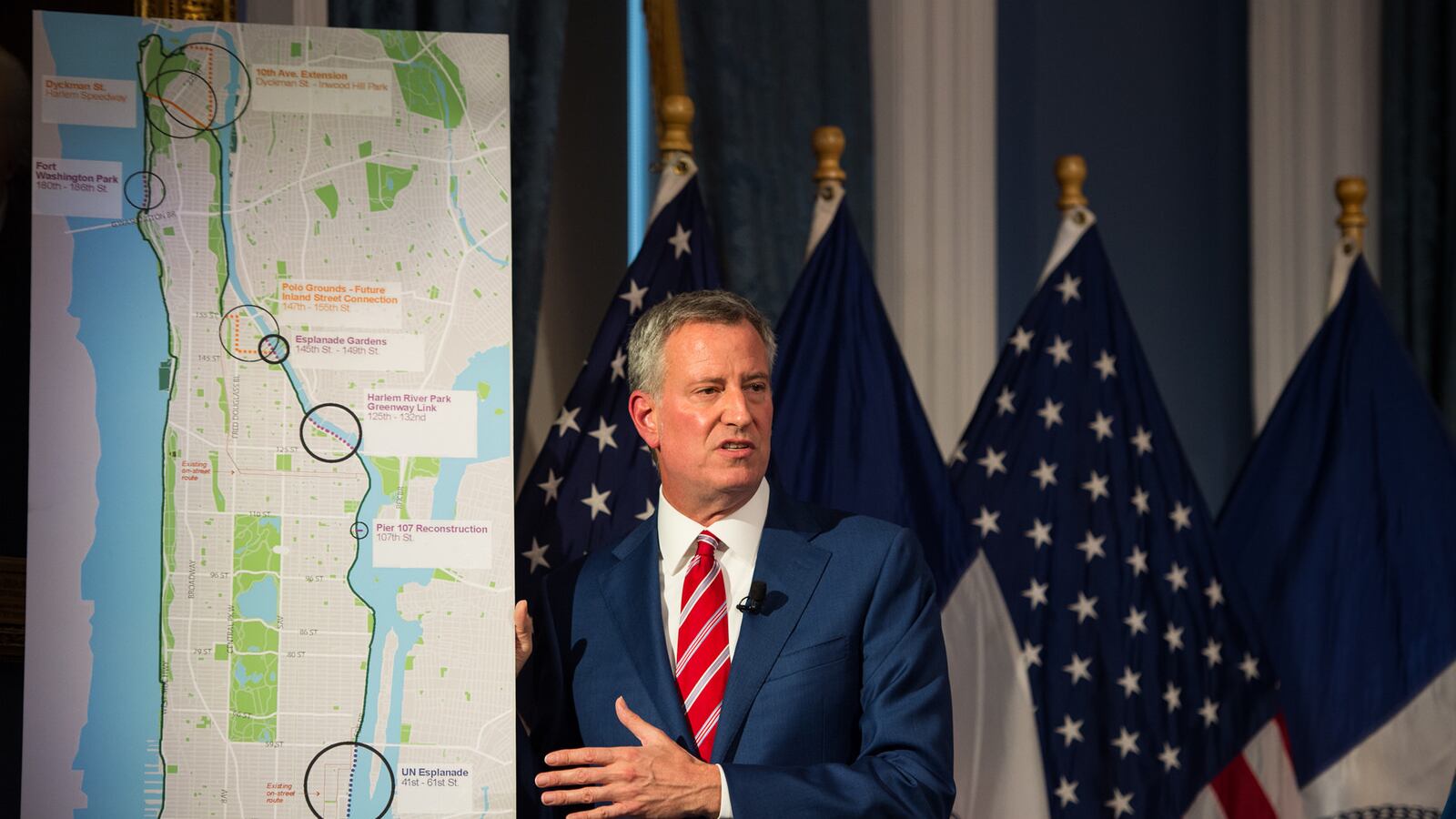Mayor Bill de Blasio’s 2018 executive budget, unveiled Wednesday, was hailed as a win by advocates who successfully pushed for the restoration of $10.3 million in funding for homeless students omitted from his draft budget.
“We are disappointed that we had to fight to get the $10.3 million restored,” said Randi Levine, policy director at Advocates for Children, “but are relieved that the mayor has restored the funding.”
The mayor’s $84.9 billion budget funds several other education priorities, many of which were first revealed in January. New additions include a sweeping plan to extend universal pre-K to 3-year-olds, announced Monday, and a five-year push to install air conditioning in all city classrooms.
The “3-K for All” initiative builds on the mayor’s existing Pre-K for All program for 4-year-olds, his most significant education commitment to date. Extending the program to younger children will cost the city $36 million in fiscal year 2018, ramping up to $177 million in fiscal year 2021. With additional funding from city, state and federal sources, it could eventually serve 62,000 children.
“This is spending money where it will have the biggest impact,” the mayor said Wednesday. “Doing that [early education] investment the right way will facilitate everything else we’re trying to do in education.”
Equipping all classrooms with air conditioning will cost the city more than $28 million over five years, the mayor said, calling it an essential change. “Talk about everyday things that parents care about and kids care about and teachers care about,” he said. (Hot rooms are more than just uncomfortable: A study released last year found that Regents test-takers in New York City were less likely to pass if they were tested on hotter days.)
The restored $10.3 million for homeless students will pay for dozens of social workers in schools with high populations of homeless students through an initiative called “Bridging the Gap,” an Afterschool Reading Club program for children living in shelters, and teachers based in shelters who are charged with boosting school attendance, among other initiatives.
While advocates praised the mayor for including that funding, they said it’s still far less than is needed to truly address the crisis.
A recent report from the city’s Independent Budget Office found that the number of students who spent part of the 2015-16 school year living in a homeless shelter rose by 15 percent over the previous year, to nearly 33,000. Those students are clustered at a relatively small number of schools — 155 district schools each have 10 percent or more of their students living in shelters.
“Even with the increase to 43 Bridging the Gap social workers,” Levine wrote in an email, “most of these schools will not have a social worker to focus on this population.”

